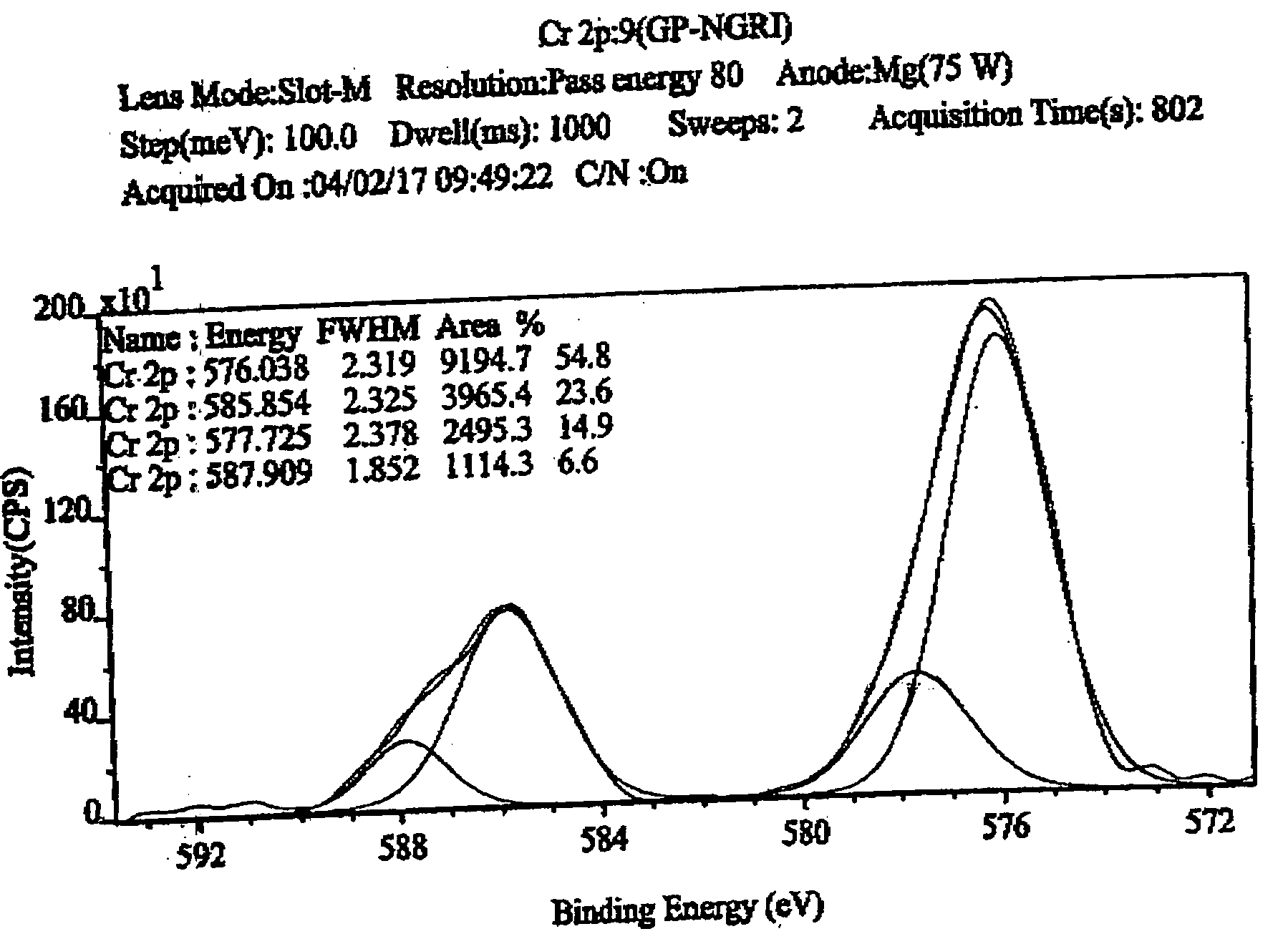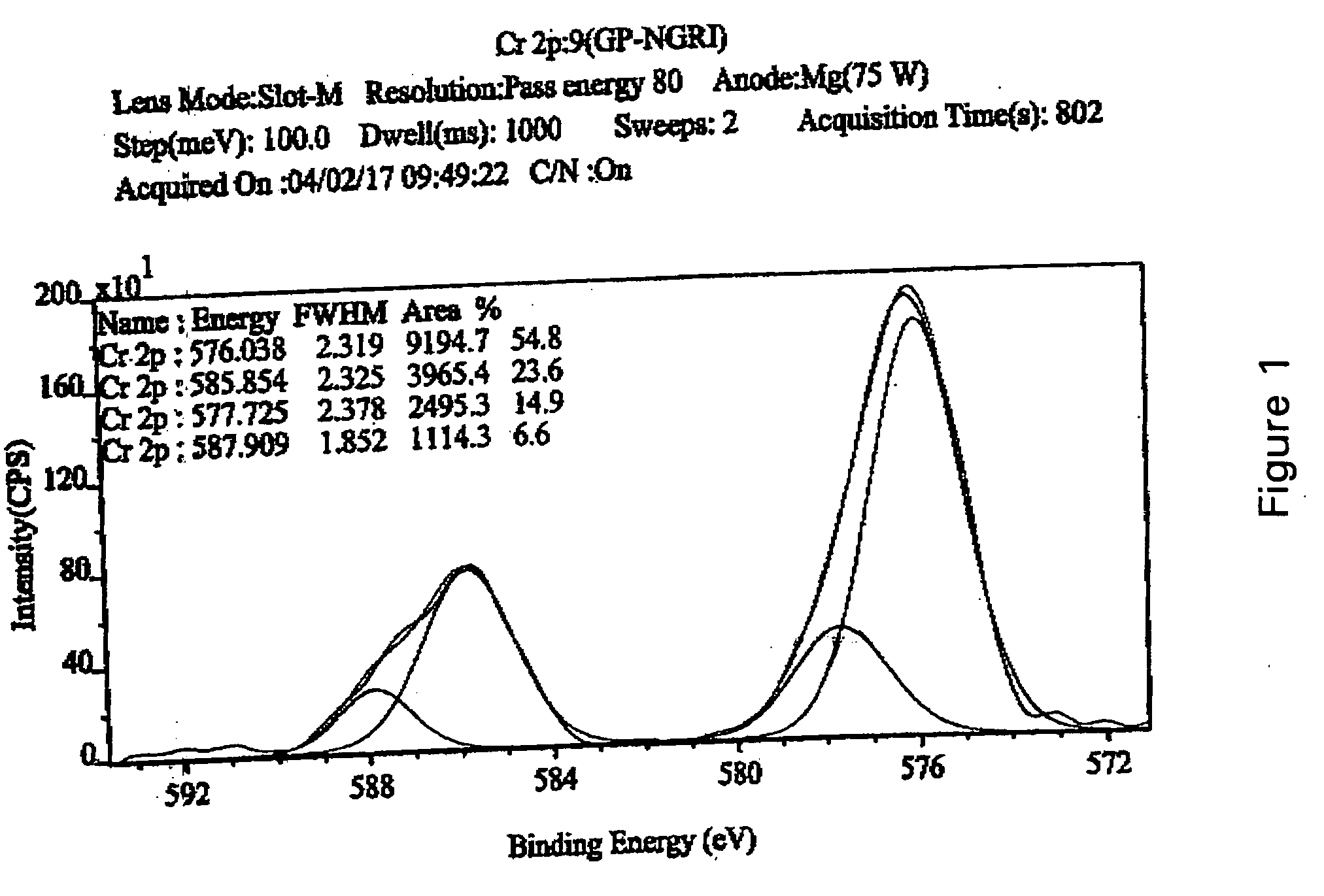Method for adsorption and reduction of hexavalent chromium by using ferrous-saponite
a technology of ferrous saponite and hexavalent chromium, which is applied in the field of adsorption and reduction of hexavalent chromium by using ferrous saponite, can solve the problems of inadequate data in terms of application, hexavalent chromium (cr (vi)) in ground water is known to be environmentally hazardous, and the ground water gets contaminated with various contaminants, etc., to achieve the effect of simple procedur
- Summary
- Abstract
- Description
- Claims
- Application Information
AI Technical Summary
Benefits of technology
Problems solved by technology
Method used
Image
Examples
example 1
[0026] Sample Preparation and Characterization:
[0027] The clay mineral was scooped out from the walls of the amygdales. It is apple green to dull pale green in colour and is soapy to touch. The material was ground in ethanol medium in porcelain mortar to avoid any oxidation during sample preparation and preserved in air tight polythene viols. The chemical composition of the samples was determined by EPMA and Hitachi S-520 SEM in EDAX mode with a filament current of 110 microamperes and an accelerating voltage of 20 kV. Ferrous iron content was separately determined by titrimetric method following the method by Wilson (1960). The composition of the sample is given in the table. 1
TABLE 1Chemical composition of the clay samples from the Killari borehole.222.5 meters (N = 4)300.15 meters (N = 4)SampleWeightCations (22WeightCations (22Oxides(wt %)Oxygen)(wt %)Oxygen)SiO235.706.38837.206.508Al2O37.481.5787.361.516FeO26.804.01025.82.3.884MgO7.802.0757.742.018CaO2.400.4622.520.472Na2O1.6...
example 2
[0029] XRD Studies:
[0030] For powder diffraction study, the ground sample was sieved through 40 micron filter to obtain uniform sized material. Less than 2 micron clay fraction was separated by centrifuging and filtration. Air dried and ethylene glycol treated samples mounted on low back-ground quartz plate were subject X-ray diffraction study. The diffraction patterns were obtained by Philips diffractometer and Siemens D-5000 powder diffractometer with HOPG graphite monochromator. Air dried sample exhibits a strong d (001) line at 1.54 nm and weak lines at 0.510 nm, 0.378 nm, and 0.308 nm. These correspond to (002), (003), (004) and (005) Bragg reflections respectively. These data are in good agreement with the published data of saponite (JCPDS card No. 29-1491), with unit cell parameters a=0.52 nm, b=0.92 nm and c=1.54 nm. XRD patterns of randomly oriented samples show d (060) value of 0.1532±0,0005 nm yielding bo=0.9275±0.002 nm.
example 3
[0031] For chromium-adsorption measurements, clay sample was taken in a 15 ml centrifuge tube, to which 0.04 M potassium dichromate solution was added. The contents were agitated for 1 to 3 hour, and subsequently heated to 200° C. The suspended particles were dried and analyzed for determining the valence-state of adsorbed chromium adopting XPS method. XPS measurements were conducted with Kratos XPS Axis 165 spectrometer equipped with a hemispherical energy analyzer. The non-monochromatized Mg-Kα X-ray source (hυ=1253.6 eV) was operated at 5 kV and 15 mA with pass energy of 80 eV, and an increment of 0.1 eV. The samples were out gassed for several hours in the XPS chamber to minimize air contamination to sample surface. In order to overcome the charging problem, charge neutralizer of 2 eV was applied and the binding energy of C 1s core level (B.E.=284.6 eV) of adventitious hydrocarbon was taken as standard. The obtained XPS spectra were fitted using a non-linear square method with t...
PUM
| Property | Measurement | Unit |
|---|---|---|
| particle size | aaaaa | aaaaa |
| temperature | aaaaa | aaaaa |
| temperature | aaaaa | aaaaa |
Abstract
Description
Claims
Application Information
 Login to View More
Login to View More - R&D
- Intellectual Property
- Life Sciences
- Materials
- Tech Scout
- Unparalleled Data Quality
- Higher Quality Content
- 60% Fewer Hallucinations
Browse by: Latest US Patents, China's latest patents, Technical Efficacy Thesaurus, Application Domain, Technology Topic, Popular Technical Reports.
© 2025 PatSnap. All rights reserved.Legal|Privacy policy|Modern Slavery Act Transparency Statement|Sitemap|About US| Contact US: help@patsnap.com


